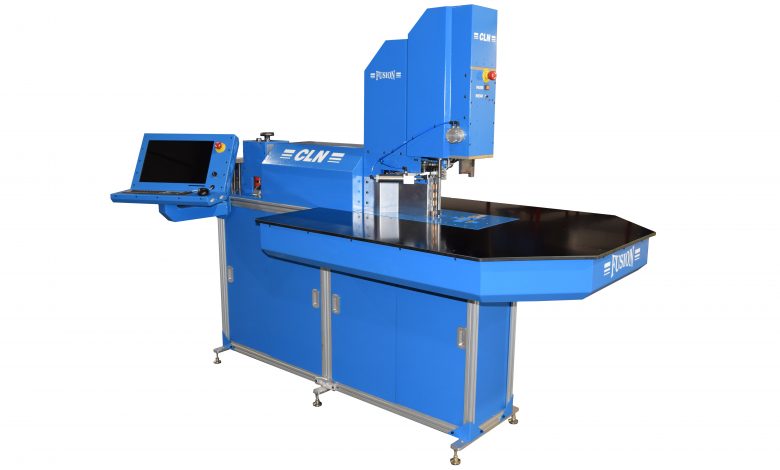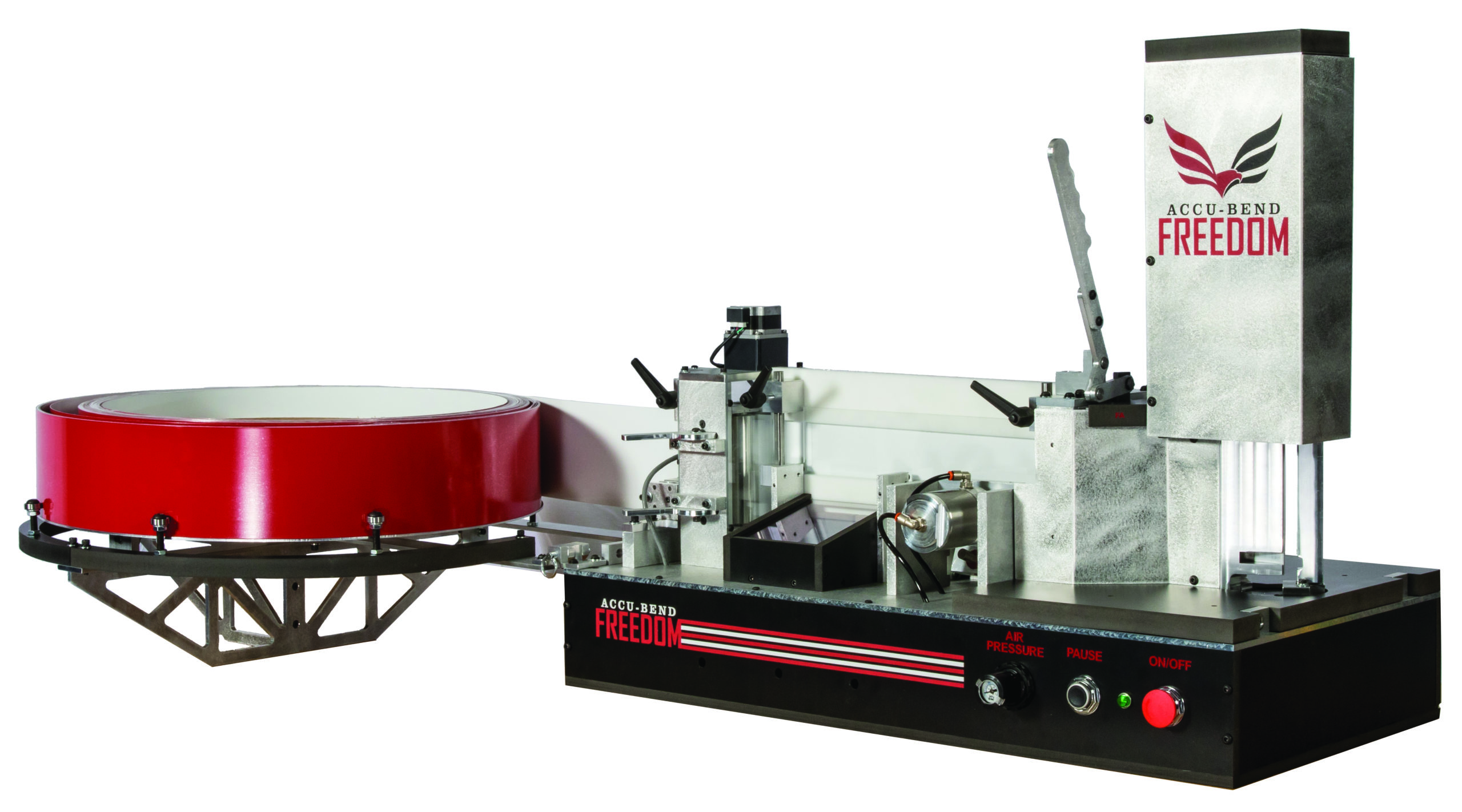Channel Letter Benders: Less Toil with the Coil
Channel letter benders make forming letters a snap.
Many sign shops bend channel letters by hand, but there are numerous bending mechanisms on the market that can make the job go much faster.
Using channel bending machines allows a shop to make all of their letters identical. When letters are hand bent over radius pipes, no two letters are ever the same, says Carl Ondracek, president of Computerized Cutters Inc., which developed the Accu-Bend channel letter bending machine in 1997.
Channel letters themselves haven’t changed all that much in 20 years. The main difference is that they used to use neon tubes to light up the letters and now the industry uses LED lighting. But 99% of the letters are built the same way they were two decades ago. What has changed in the past 20 years is that there are more companies making this type of equipment now and the equipment has improved to the point where it can bend letters as small as 2.5 to 3 inches.
The letters themselves are made from aluminum coil that is fed into the bending machines and shaped into the letters of choice. Most of them are pre-painted before they are shaped, notched, flanged and bent. The coils come in different widths so that sign shops can make letters of almost any size.
SDS Automation introduced a bending mechanism about 22 years ago on a machine that was for the die cutting and die making industry. It is that same bending technology that is on its Super ChannelBender machine today.
“The time savings is enormous. For example, an 18-inch channel letter would take someone 45 minutes or more to form by hand. Our machine will do it in four minutes. It’s a huge savings as far as labor and as far as our customers are concerned,” says James Cross, vice president of SDS Automation’s sign-making division. “Right now, there’s still a surprising number of people bending by hand, but it is getting more difficult for them to be competitive.”
Channel letters are popular because they are a great way to attract attention to a business and to represent the business’s brand, Cross adds.
The channel bending technology helps sign shops because “there seems to be a prevalence of people who want to collect a paycheck but a deficit of people who want to earn a paycheck,” Cross says. “By reducing the amount of labor, it helps them overcome two challenges: efficiency cost wise and a shortage of skilled and willing labor.”
Costs of this machinery continue to drop. When the first Accu-Bend machines came out, they were around $130,000, says Ondracek. Now, one of the larger machines costs about $40,000 and Computerized Cutters just introduced a table-top channel letter bending machine called the Accu-Bend FREEDOM that is priced under $20,000.
“Companies as small as you want, who only do one set of channel letters a month, will pay for the machine in one year,” Ondracek says. And the machines fit on a workbench, rolling cart or shop counter, making them available to even the smallest sign shop.
Kevin Kane, sales manager at CLN of South Florida Inc., says that CLN’s Fusion channel letter bending machines are fairly simple to use, taking about two hours of training to make anyone a channel letter expert. Most of that training is done over the phone, he adds.
“The technology has developed in a way that loading the coil is the hardest part of the job,” he says. Since the technology is simple to learn, anyone can get into making channel letters. It can be difficult to get into serving retail customers with this technology only because of the “hoops you must jump through, like permits,” he says. “In most big cities to pull a permit you must be a licensed electrical sign contractor. This requires liability insurance, an insurance bond, occupational license … and that is the easy part.”
Kane says that if companies choose to sell wholesale instead it can eliminate a lot of headaches. “But there is a tradeoff. You will get less money per upright inch, but you may keep your hair,” he says.
CLN’s Fusion channel letter machine has clamping die plates for sharper bends, rollers for the radiuses and a shear at the end of the bending process so there is no wasted material. It also has a drain-hole punch. Once a shop has the right equipment, Kane says that it is all about knowing their neighborhood and the demand for the product.
“Can you reach outside of your neighborhood and grab the national accounts? Keep in mind this is not sticking vinyl letters on a window, this is a commitment to your sign shop team. It is a new revenue stream for your business and can become very profitable with the right equipment and the right team behind you,” he says.
If a sign shop invested $70,000 in a channel bending machine, it would need to sell 50 letters a month to pay off the equipment and put money in their pocket, he adds.
“The key is buying a production piece of equipment and not a toy,” Kane says.
SDS’ Cross says that it isn’t hard for sign shops to get into making channel letters but it does require some capital upfront and the knowhow to be a UL-approved shop. That means the shop has to have a licensed electrician on staff or they need to hire one as a consultant.
Channel letters are the most lucrative part of the sign industry and the most expanding part of the sign industry, says Ondracek.
The biggest letters that were done on an Accu-Bend were 21 feet tall, Ondracek says. Those letters usually adorn bigger hotels and stadiums.
The width of the coils has also come down. Now the material is smaller and shallower, thanks in part to the smaller LED lighting that is used now. There is not a need for deeper channels to hold neon gas tubing.
Channel letters typically have overlapping seams that are held together with rivets. The rivet holes have always been drilled by hand after the letter is formed. SDS Automation developed a patented mechanism for punching those holes automatically as the coil material feeds through the bending machine. It also will punch the drain holes required to allow moisture or condensation to weep out of the bottom of the letters.
SDS has also introduced a new standalone machine, the ChannelSander, to sand and prep the aluminum coils for custom paint colors before they are fed into the channel letter bending machine. In the past, letters would be sanded and prepped after they were bent into shape, which is a time-consuming process. “It’s eliminating hours and hours of labor for even a moderately busy sign shop,” Cross says.
The industry keeps growing every year because development has exploded in many parts of the country. Suburbs are going up quickly and with that growth comes strip malls and other businesses that need signage, says Ondracek. He adds that there are about 40,000 sign companies in the United States and about half of them are either buying or making and selling channel letters, which is a big difference from 10 to 20 years ago.

